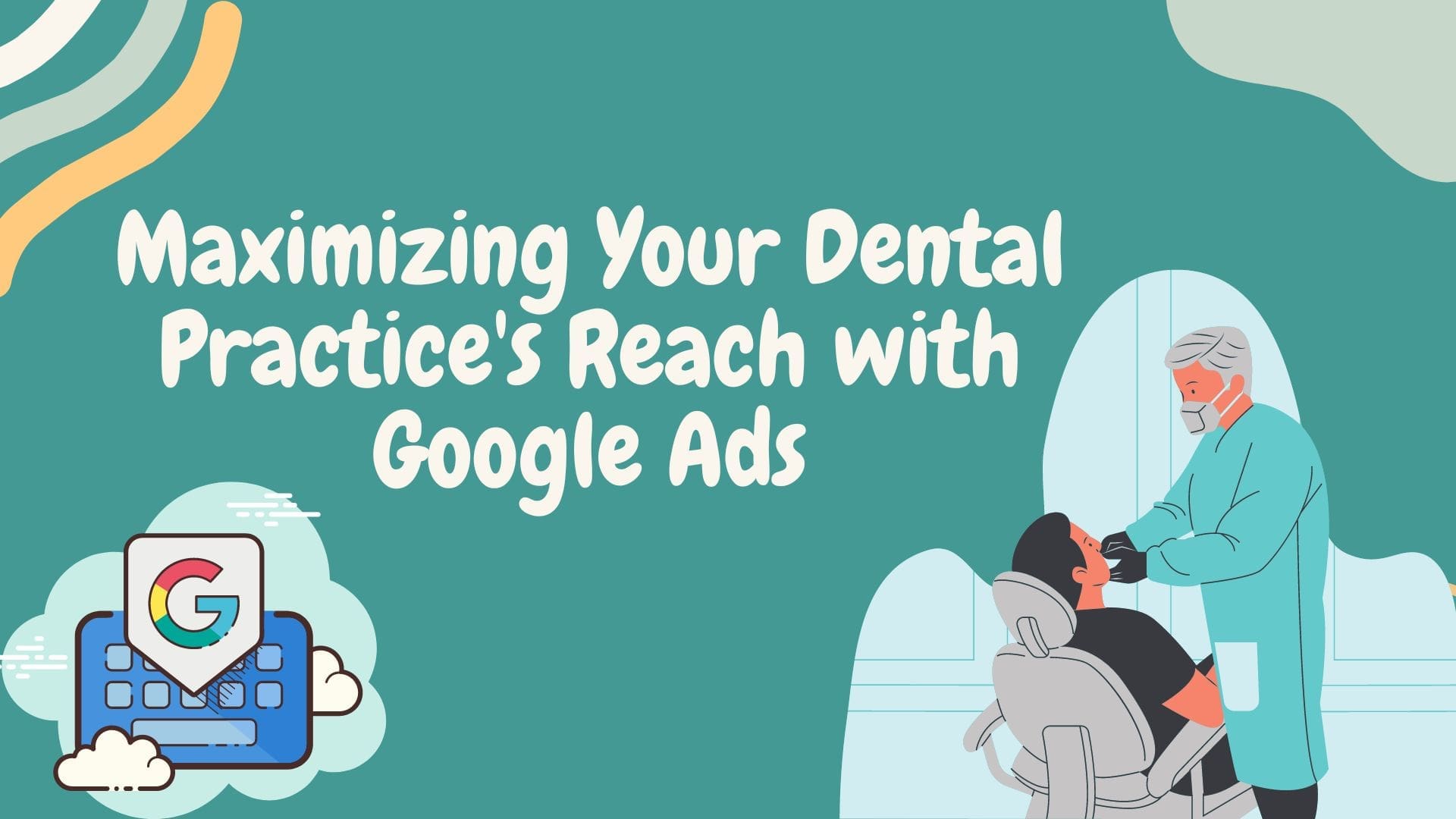
In today’s competitive dental industry, reaching new patients and retaining existing ones is becoming increasingly challenging. One of the most effective ways to maximize your dental practice’s reach is by leveraging Google Ads for Dentist. This powerful online advertising platform can help you connect with potential patients at the exact moment they are searching for dental services in your area.
In this article, we will explore the essentials of Google Ads for dental practices, guide you through the process of setting up and managing your campaign, and share valuable tips for optimizing your ads for maximum results. Let’s dive in!
Google Ads is an online advertising platform that enables businesses to create and display ads on Google search results pages, YouTube, Gmail, and various websites across the internet. These ads are shown to users who are searching for products or services related to your business, making them highly targeted and relevant.
Google Ads offers several benefits for dental practices, including:
By implementing a well-planned Google Ads campaign, dental practices can increase their online presence and drive more qualified leads to their website.
Before diving into Google Ads, familiarize yourself with these basic terms and concepts:
Selecting the right keywords for your dental practice is crucial to ensure your ads are shown to potential patients searching for your services. Use the Google Ads Keyword Planner to find relevant keywords based on your dental services, location, and target audience. Consider incorporating long-tail keywords (e.g., “pediatric dentist near me”) for more targeted and cost-effective results.
An effective ad copy should clearly communicate your dental practice’s unique selling points, create a sense of urgency, and include a call-to-action. Here are some tips for writing compelling ad copies:
A well-designed landing page can significantly improve your Google Ads campaign’s conversion rate. Here are some tips for creating an effective landing page:
To get the most out of your Google Ads campaign, continuously optimize your ads, keywords, bids, and landing pages. Here are some ways to improve your campaign’s performance:
Regularly monitoring your Google Ads campaign’s performance is crucial to identify areas that need improvement and make data-driven decisions. Use the Google Ads dashboard to track key metrics, such as clicks, impressions, click-through rate, cost-per-click, and conversions.
By analyzing your Google Ads performance data, you can make informed decisions to improve your campaign’s results. For example, if certain keywords are driving more conversions at a lower cost, consider increasing your bids on those keywords. Or if a particular ad copy is underperforming, test different headlines or descriptions to identify the most effective messaging.
Remember, SEO and SEM should be used in conjunction to maximize your dental practice’s online visibility.
When managing your Google Ads campaign, be mindful of these common mistakes:
Google Ads for Dentist is a powerful marketing tool that can help you attract more patients, increase your online visibility, and grow your dental practice. By understanding the basics of Google Ads, setting up a well-targeted campaign, optimizing your ads and landing pages, and continuously monitoring your performance, you can maximize your dental practice’s reach and achieve a higher return on investment.
1. What is the difference between Google Ads and SEO for dental practices?
Google Ads is a paid advertising platform that allows you to display ads at the top of Google search results, while SEO (Search Engine Optimization) involves optimizing your website and content to rank higher in organic search results. Both strategies can be effective in increasing your dental practice’s online visibility and attracting more patients. Learn more about SEO for small businesses.
2. How much should I budget for my dental practice Google Ads campaign?
The budget for your dental practice Google Ads campaign depends on factors such as your location, competition, and desired results. Start with a modest budget and gradually increase it as you see positive results and improve your ads’ performance.
3. How long should I run my Google Ads campaign for dental practices?
There is no fixed duration for running a Google Ads campaign. It is essential to continuously monitor and optimize your campaign to determine if it is delivering the desired results. You may need to adjust your strategy over time as your dental practice grows and evolves.
4. Can I track the phone calls generated by my Google Ads campaign for my dental practice?
Yes, you can use Google Ads call tracking to measure the number of phone calls generated by your ads. This feature allows you to assign a unique phone number to each of your ads and track the calls in your Google Ads dashboard.
5. How do I measure the success of my Google Ads campaign for my dental practice?
Success in Google Ads can be measured by various metrics, such as clicks, impressions, click-through rate, cost-per-click, and conversions. Regularly monitoring these metrics can help you identify areas that need improvement and make data-driven decisions to optimize your campaign’s performance.
You must be logged in to post a comment.
